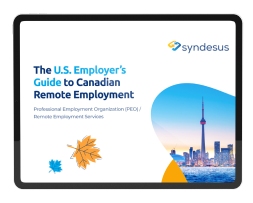The path to American citizenship is rarely easy, but few immigration journeys are as long and complicated as the evolution of F-1 students to US citizens.
This journey starts with an F-1 student visa, then to Optional Practical Training (OPT) for one to three years following graduation, then to an H-1B visa for up to six years or more, then to a green card, and finally to US citizenship.
This entire process can take over a decade (or in some cases 150 years!) to get to permanent residence and then five more years to get citizenship. Sounds exhausting, right?
Right now, those with F-1 OPT status have taken their shot at a bite of the H-1B apple. Of course, there’s a chance it’ll work out, but planning on an H-1B is always a gamble. When it doesn’t work out, F-1 visa holders are stuck trying to figure out ways to stay in the US – it’s a backward scenario, really.
Since 2008, the OPT program has exploded, and approximately 411,000 people had documentation to work under OPT in 2019.
Here’s what F-1 visa holders often go through just to stay in the US, hopefully with the ability to continue working, even though they have in-demand STEM degrees, and why Canada may be a much simpler and better solution.
How F-1 visa holders with OPT hedge their bets against not getting selected in the H-1B lottery
For many students in the US on an F-1 visa — the visa type that allows a student to temporarily live in the US while studying — the ultimate goal is to call the US home. Unfortunately, this isn’t quite as easy as simply finding a job.
Each year, hundreds of thousands of students — 362,929 in 2018 — enter the US on F-1 visas.
After completing their studies, F-1 students can apply for OPT which grants temporary employment authorization that provides students with an opportunity to gain practical work experience outside of the classroom.
So, after spending years and tens, if not hundreds, of thousands of dollars on a US education, and often with 1-2 years of experience working in the US, F-1 visa holders working on OPT are often left deflated when their H-1B application isn’t selected in the lottery.
Technically, OPT is a continuation of the F-1 student visa and is not a separate work visa. It allows international students to work in the US for 12 months (usually after graduation), and 24 additional months for jobs in STEM fields.
Since 2008, the OPT program has exploded, and approximately 411,000 people had documentation to work under OPT in 2019. Interestingly, the number of people working under OPT has exceeded H-1B visas every year since 2015.
The ultimate goal of most F-1 visa holders working in OPT is to get sponsored for an H-1B visa, but there’s no guarantee there. With a limit of 65,000 new H-1B visas granted each year, with an additional 20,000 to graduates of US masters programs or higher, most applicants simply don’t get selected. In 2020, after a new H-1B registration system was implemented, nearly 275,000 H-1B registrations were received by the US Citizenship and Immigration Service.
In 2021, that number is predicted to be even higher.
So, after spending years and tens, if not hundreds, of thousands of dollars on a US education, and often with 1-2 years of experience working in the US, F-1 visa holders working on OPT are often left deflated when their H-1B application isn’t selected in the lottery.
As a result, they often go to great lengths in order to stay in the US:
- They go back to school and get another US degree. Oftentimes after receiving a bachelor’s or masters in computer science, engineering, etc., F-1 visa holders will go back to either get the next level up (masters or Ph.D.), or get a complimentary degree like an MBA to stay competitive in, often, the tech field. This, of course, costs even more money and takes more time.
- They consider other, often more challenging, and expensive visa options. Many consider the O-1 visa, which is meant for individuals with “Extraordinary Ability or Achievement.” If granted, this visa doesn’t require employer sponsorship and can be self-petitioned, but it’s often a more expensive, and intensive, visa application process.
- They look to get married if they are in a relationship with a US citizen or permanent resident. If an F-1 visa holder happens to be in a relationship with a US permanent resident or citizen, they may accelerate plans to get married so that they can stay in the US and get work authorization.
Clearly, the system isn’t set up in a way that easily allows talented, hard-working F-1 visa holders to continue working and ultimately settle in the US
So it’s important to have a backup plan. Canada’s Global Talent Stream is it.
Why Canada’s Global Talent Stream is better than the H-1B visa
The Global Talent Stream (GTS) program was designed to expedite and ease the processing time for visa and work permit applications for foreign nationals who possess unique talents or are highly skilled. It’s similar to the H-1B, but in many ways, a lot better.
Currently, Canada prioritizes young, highly-skilled workers with Canadian experience for permanent immigration, and is aiming to welcome over 300,000 new immigrants each year, so participating in GTS is a smart way to set yourself up for a future in Canada.
For example, the typical H-1B processing time is three months to one year for approvals. Now, compare that to GTS which takes 10 business days to assess applications and 14 business days to process work permits for qualified workers.
Another GTS perk is that once you’re a permanent resident, which can take less than a year, you can become a Canadian citizen in just five years. If you’ve lived in Canada for at least 1,095 days out of five years you could be one of the thousands of new citizens Canada welcomes each year.
Currently, Canada prioritizes young, highly-skilled workers with Canadian experience for permanent immigration, and is aiming to welcome over 300,000 new immigrants each year, so participating in GTS is a smart way to set yourself up for a future in Canada.
Overall, GTS has given Canadian employers increased access to global talent, and while overall immigration has slowed because of the pandemic, the efficiency and flexibility of the GTS program have allowed Canada to continue growing.
As you can see, there are plenty of reasons to skip the H-1B drama, but if you’re a US employer, what can you do if you want to give your OPT employee stability in Canada without already having a Canadian office?
Here’s the solution: Hire the OPT worker through a PEO.
Hire your F-1 OPT worker in Canada through a PEO – Let Syndesus help you navigate the Global Talent Stream
A professional employer organization — commonly referred to as a PEO — gives US-based companies the power to remotely hire someone who is living abroad. A PEO like Syndesus helps handle the Canadian immigration process and legally hires the candidate in Canada, but the US company pays the salary (via the PEO) and manages the day-to-day job — it will feel like a completely normal remote job.
While the US employer retains essential management over the employee, the PEO can cover human resource tasks like payroll, health benefits, RRSP (Canada’s version of 401k) contributions, and leave. Indeed, a Canadian PEO can offer employers much more than just an easy way to hire in Canada.
If working in Canada via the Global Talent Stream sounds a bit easier than the H-1B visa process, that’s because it is. Hiring a worker in Canada can be a breeze if you turn to a PEO for help.
So, if you’re a US employer, Syndesus can walk you through the logistics of relocating your worker to Canada.
Want to hear more? Book a consultation to discuss how we can help you retain top talent.




